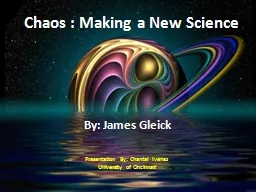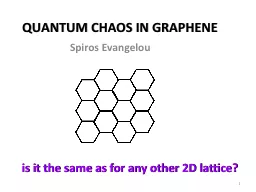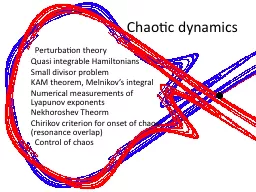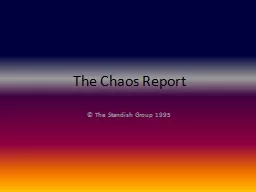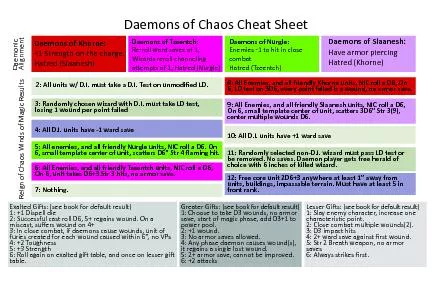PPT-Chaos : Making a New Science
Author : trish-goza | Published Date : 2016-09-10
By James Gleick Presentation By Chantal Ivenso University of Cincinnati 5 Main Points Exploring and Embracing Chaos Linear vs Nonlinear mathematics Fractal Attractors
Presentation Embed Code
Download Presentation
Download Presentation The PPT/PDF document "Chaos : Making a New Science" is the property of its rightful owner. Permission is granted to download and print the materials on this website for personal, non-commercial use only, and to display it on your personal computer provided you do not modify the materials and that you retain all copyright notices contained in the materials. By downloading content from our website, you accept the terms of this agreement.
Chaos : Making a New Science: Transcript
Download Rules Of Document
"Chaos : Making a New Science"The content belongs to its owner. You may download and print it for personal use, without modification, and keep all copyright notices. By downloading, you agree to these terms.
Related Documents

